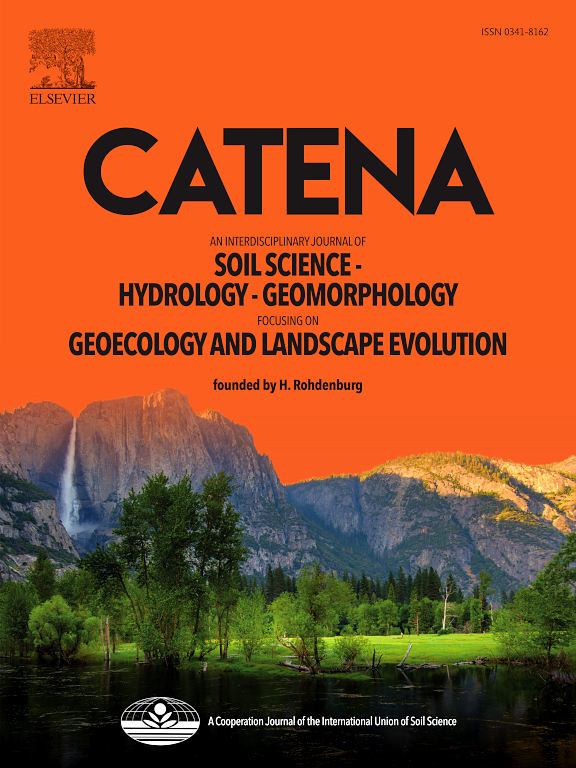Landslide susceptibility prediction in the loess tableland considering geomorphic evolution
IF 5.4
1区 农林科学
Q1 GEOSCIENCES, MULTIDISCIPLINARY
引用次数: 0
Abstract
To explore the relationship between the loess tableland geomorphic evolution and landslide susceptibility, a loess tableland area in the northern of Xi’an City was selected in this study. The study area was divided into four areas according to the type of loess tableland. A complete historical landslide inventory was created and 11 landslide factors were selected. Landslide susceptibility prediction was performed for the subarea and the whole area based on the SVM and RF models, respectively, and several landslide susceptibility maps were generated. The results show that the prediction of landslide susceptibility in loess tableland areas needs to take into account the influence of its landscape evolution, and more accurate results can be obtained by calculating individually for different sub-areas. The RF model has strong performance in landslide susceptibility prediction when considering the tableland evolution, while the SVM model is better when considering the whole region as a whole. Multiple factors, such as human activities and river erosion, have increased the landslide susceptibility of the residual tableland phase, and repeated landslides along the tableland margins have led to a continuous reduction of the loess tableland surface. Given the importance of tableland landforms in the Loess Plateau region, a framework for susceptibility mapping and zonation was proposed, which is suitable for loess tableland regions where multiple developmental phases co-exist. This study strengthens the understanding of landslide development and susceptibility in response to the landscape evolution of the loess tableland and provides support for disaster prevention and mitigation and land planning.
求助全文
约1分钟内获得全文
求助全文
来源期刊

Catena
环境科学-地球科学综合
CiteScore
10.50
自引率
9.70%
发文量
816
审稿时长
54 days
期刊介绍:
Catena publishes papers describing original field and laboratory investigations and reviews on geoecology and landscape evolution with emphasis on interdisciplinary aspects of soil science, hydrology and geomorphology. It aims to disseminate new knowledge and foster better understanding of the physical environment, of evolutionary sequences that have resulted in past and current landscapes, and of the natural processes that are likely to determine the fate of our terrestrial environment.
Papers within any one of the above topics are welcome provided they are of sufficiently wide interest and relevance.
 求助内容:
求助内容: 应助结果提醒方式:
应助结果提醒方式:


